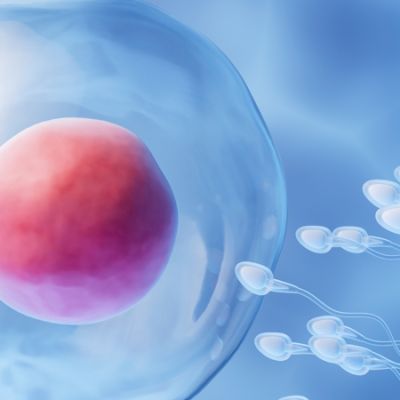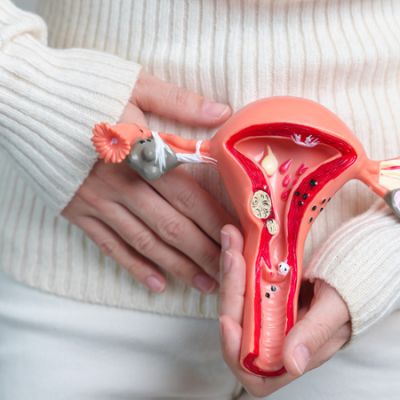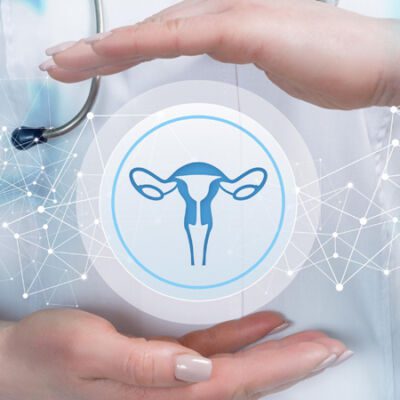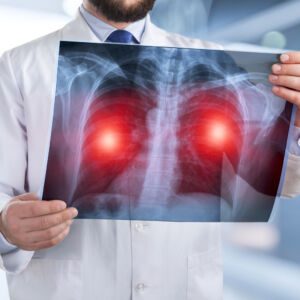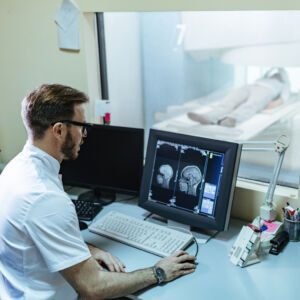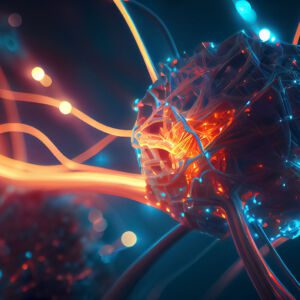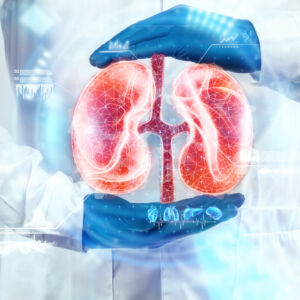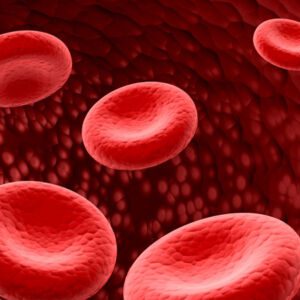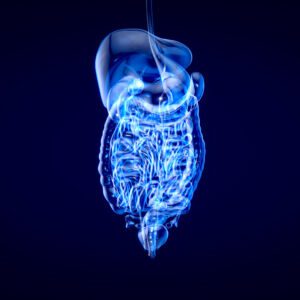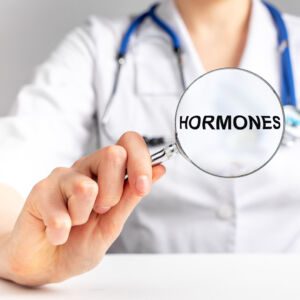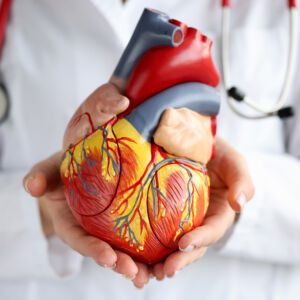In our gynaecology and obstetrics department, gynaecological follow-up is the key factor to a better women’s health.
BIRTH
We take care of the whole process from pregnancy and birth to the care of the newborn in the first weeks of life.
Two options are available: Natural birth or caesarean section.
Natural birth is a term used to describe a birth without the use of drugs or other medical interventions. The term natural is used to distinguish it from elective caesarean sections and surgical deliveries.
A caesarean section is sometimes necessary to ensure the well-being of the mother or baby.
Some women choose to have a caesarean without any medical indication. This is their choice.

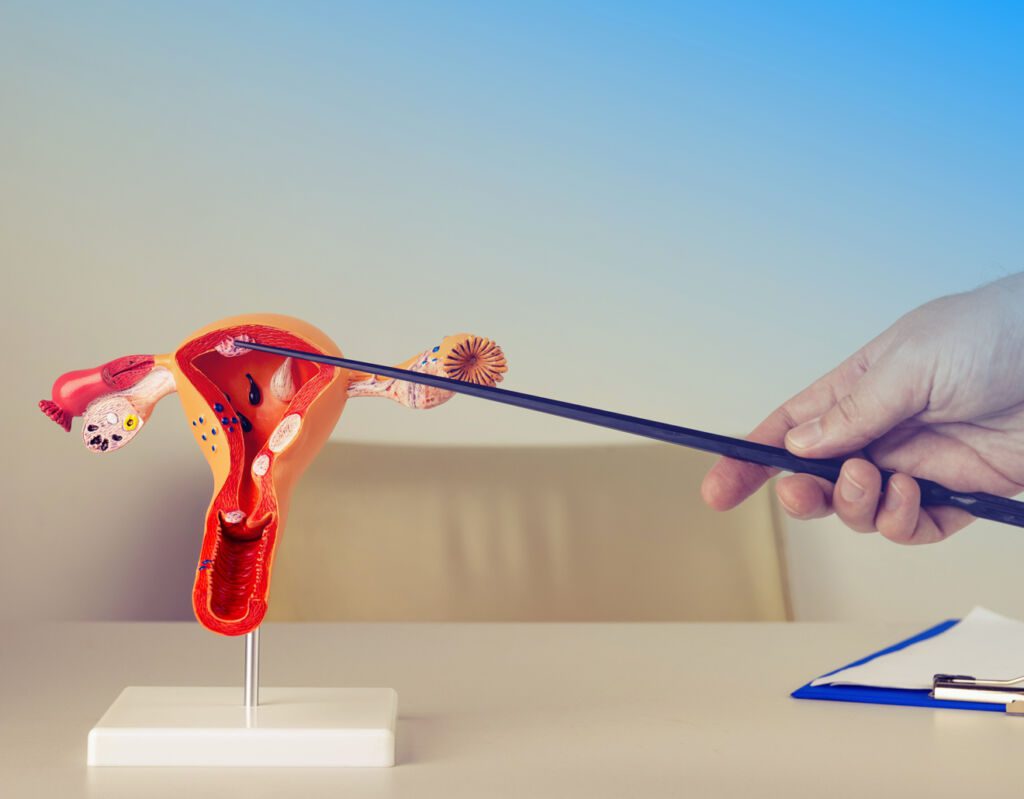
CANCER TREATMENT
Our clinic offers the following treatments through its Gynaecology and Obstetrics Department:
Ovarian cancer
Ovarian cancer is a group of tumours that can affect different tissues of the ovary.
Endometrial cancer
Endometrial cancer is a cancer that develops in the endometrium, the tissue of the uterus where embryos are deposited.
Breast Cancer
Breast cancer is the most common type of cancer. If it is detected early, the chances of recovery are very good.
Our teams are also experts in treating the following conditions:
- Ovarian cancer
- Cervical cancer
- Vulvar cancer
- Vaginal cancer
INFERTILITY TREATMENT
Infertility (supported in our Gynaecology and Obstetrics Department) is the difficulty of having a child after one year of marriage.
How we can help you?
- Insemination (IAC): Artificial insemination is a form of assisted reproduction technique used to achieve pregnancy. The woman’s reproductive partner provides the sperm sample, which is then prepared and inserted into the uterus or fallopian tubes via a catheter.
- In vitro fertilisation (IVF and ICSI): In vitro fertilisation (IVF) is a procedure in which eggs are removed from the ovaries and fertilised by sperm outside the body. The fertilised egg is then returned to the uterus.
- Testicular biopsy (BT): A testicular biopsy (BT) is a procedure in which a small sample of tissue is taken from the testicle. A BT may be done for several reasons: to check for cancer or other conditions in the testicles, to determine if a man has testicular cancer, to collect sperm for artificial insemination (AI).
- Fertility preservation (freezing and vitrification): The aim of fertility preservation is to allow you to use your eggs or sperm in the future, even if you are no longer able to do so. Two main technologies are used for fertility preservation: egg freezing, egg vitrification (cryopreservation) and sperm freezing.
- Preimplantation Genetic Diagnosis (PGD)
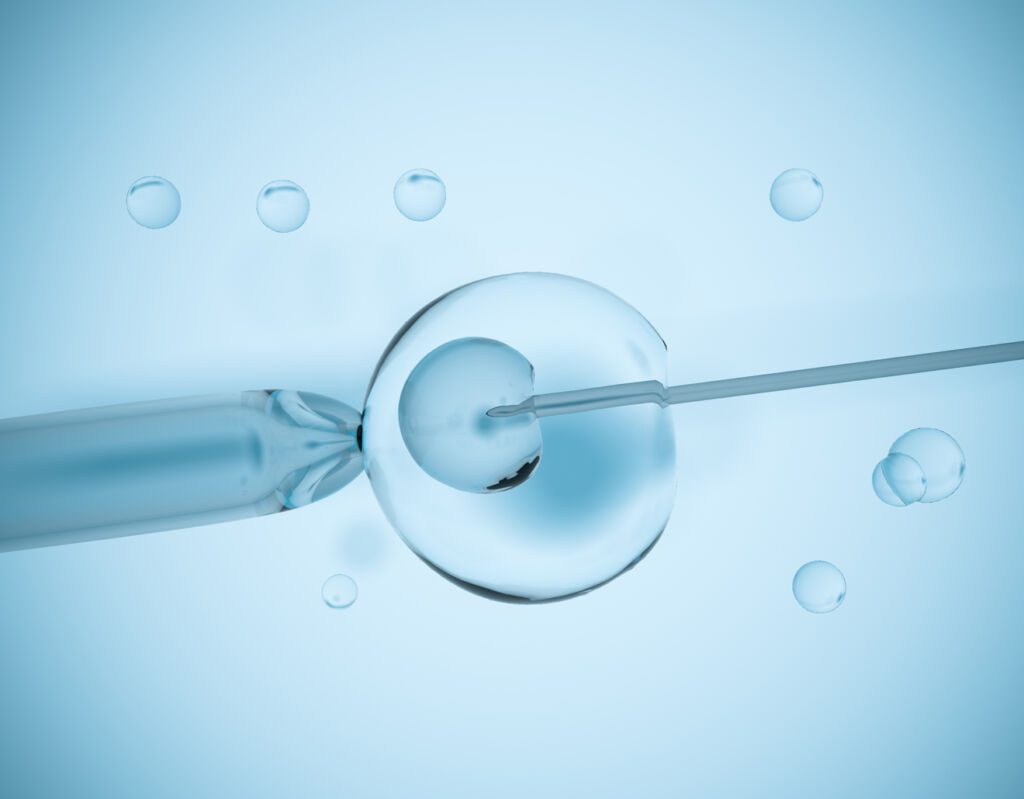
FIBROIDS
A fibroid is a benign tumour made up of muscle and fibrous tissue (supported in our Gynaecology and Obstetrics Department).
It’s found in the womb. Fibroids can cause pain, abnormal vaginal bleeding, constipation, repeated miscarriages and more frequent urination or urgency.
There are two types of uterine fibroids (treated in our gynaecology and obstetrics department): submucosal fibroids and intramural fibroids.
A submucosal fibroid develops beneath the wall of the uterus but remains attached to the muscular wall of the uterus at its base. This type of fibroid does not usually cause any symptoms, but it can grow considerably and change the shape of the uterus, giving it a bumpy appearance on an ultrasound (sonogram). Treatment options include surgery to remove all or part of the fibroid, hormone therapy with progestins, or a minimally invasive procedure called myomectomy (removal of only part of the fibroid).
Intramural fibroids develop within the muscle wall of the uterus without crossing it. This type of fibroid can cause heavy or prolonged menstrual bleeding and pain during sexual intercourse because it irritates the blood vessels around it. Treatment options include surgery.


PROLAPSE
Prolapse (supported in gynaecology and obstetrics department) is the descent of one or more organs from the pelvis into the vagina.
These organs can be the bladder, vagina, uterus or rectum.
This phenomenon is due to the relaxation or damage of structures (ligaments, pelvic floor muscles, etc.).
The most common forms of prolapse are
– Rectocele – A rectocele occurs when the wall between the rectum and the vagina swells up inside or outside the vagina. This can cause discomfort during bowel movements and sexual intercourse.
– Cystocele – A cystocele occurs when part of the bladder leaks into the vagina. This can make it difficult to empty the bladder completely, leading to urinary incontinence (involuntary urination).
OVARIAN CYST
An ovarian cyst (treated in our gynaecology and obstetrics department) is a fluid-containing swelling that develops on the ovaries (organs located at the end of the fallopian tubes, which are connected to the uterus).
Ovarian cysts can be functional (or physiological) or organic, benign or malignant.
The most common types of ovarian cyst are:
– Functional cysts. These are the most common type of ovarian cyst. They occur when a follicle does not release an egg, but continues to produce oestrogen until it ruptures on its own. Functional cysts usually cause no symptoms and disappear after about three months without treatment.
– Dermoid cysts: Dermoid cysts develop from a collection of skin cells and other tissue outside the uterus. They are usually mild, but if they get big enough, they can break or twist on themselves and form blood clots inside (haematomas). In rare cases, this can lead to serious complications such as internal bleeding or organic lesions if left untreated.
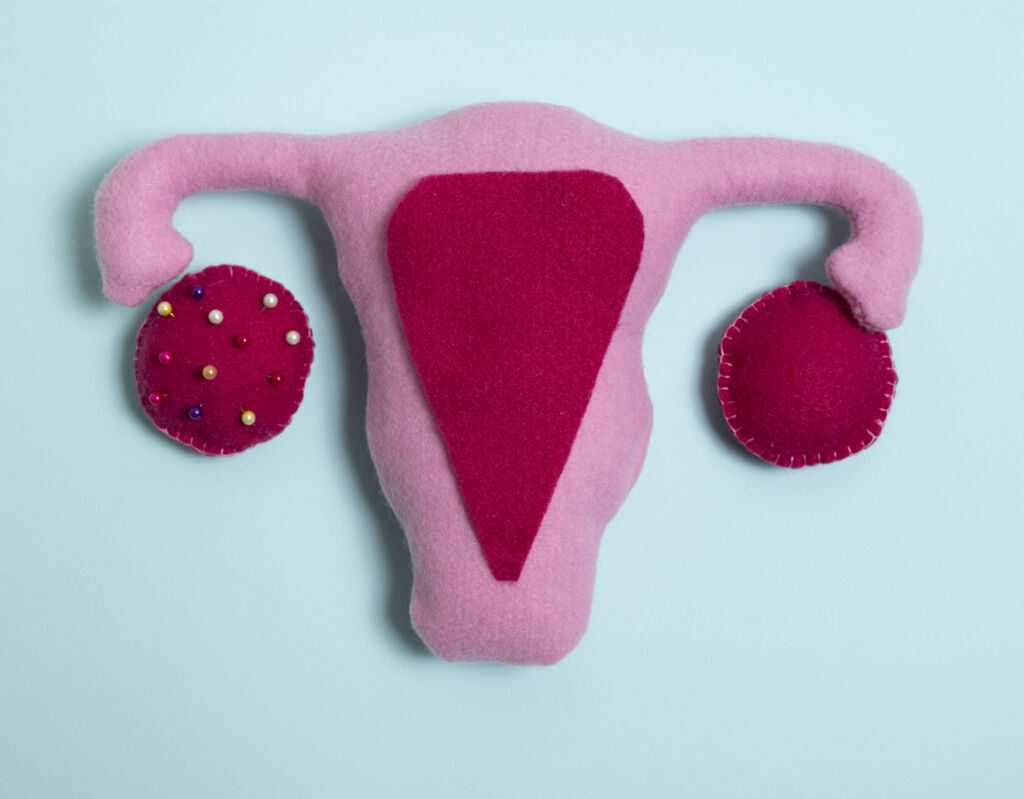
WHAT IS AMNIOCENTESIS?
Amniocentesis is a prenatal test that can be used to diagnose chromosomal abnormalities, such as Down’s syndrome. The test involves taking a sample of the fluid that surrounds the foetus (amniotic fluid) and analysing it for abnormalities.
Amniocentesis is usually done in the second trimester of pregnancy, between 15 and 20 weeks. However, it may be done earlier if you are at risk of genetic disorders, for example, if there is a family history of genetic disorders or if you have had a baby with genetic abnormalities.
Amniocentesis involves inserting a long needle into your abdomen and womb to collect amniotic fluid around the developing baby. This fluid contains the baby’s cells, which can be analysed for signs of genetic disorders or other problems.
WHAT IS ENDOMETRIOSIS?
Endometriosis is a condition in which the tissue that normally lines the inside of the womb (endometrium) develops outside the womb. It can affect a woman’s fertility, cause pain and other complications.
Endometriosis occurs when cells from the lining of the womb (called endometrial cells) attach themselves to areas outside the womb, such as the ovaries or fallopian tubes. These cells act like any other cells in your body – they grow and multiply. Over time, this can lead to scar tissue and adhesions.
Endometriosis can also cause inflammation, which can make it difficult to get pregnant.
If you have endometriosis, you will have some of the same symptoms as women who have endometrial tissue in their uterus – such as heavy menstrual bleeding, abdominal pain before and during menstruation, painful sex and diarrhoea at certain times in the monthly cycle – but some symptoms will be different. For example, the pain may get worse during exercise or bowel movements, not just during sex or menstruation.
We present to you some articles relating to pathologies treated in our Mediterranean clinic, with an effective and efficient medical and paramedical team.
Menopause is the time in a woman’s life when menstruation stops for good. This is due to a decrease in the female sex hormones oestrogen and progesterone.
The menopause usually occurs between the ages of 45 and 55, but it can happen as early as 40 or as late as 60.
Symptoms of the menopause
The most common symptoms of the menopause are:
– Hot flashes – sudden sensations of heat, flushing and sweating. Hot flushes can be mild or severe and last from a few seconds to several minutes. They often happen at night and can wake you up if you are asleep. Hot flashes can be more intense in wet weather or when you are nervous or upset.
– Night sweats – intense sweating during sleep that wets the sheets. Night sweats are common during the perimenopause (the period before the menopause), but less common after the menopause has started. If you have night sweats for more than three months, talk to your doctor about options for treating night sweats.
– Vaginal dryness – thinning, pain, itching, burning or bleeding of the vagina that affects sexual activity and comfort; there are many over-the-counter lubricants that can help relieve this symptom.
Vaginitis is inflammation of the vagina. It can be caused by various types of bacteria and viruses. There are many types of vaginitis, including bacterial vaginosis, trichomoniasis and vulvovaginal candidiasis (yeast infection).
Vaginitis is often confused with a yeast infection because the symptoms are similar. However, if you have been diagnosed with vaginitis, your doctor will probably prescribe an antibiotic to treat your condition.
The main symptom of bacterial vaginosis is an excessively thick vaginal discharge, usually with a fishy smell. The discharge may be white or grey and have a foamy texture. Other symptoms include:
– Itching in the vaginal area
– Pain when urinating
– Painful sex
Vaginal mycosis is a condition characterised by the growth of fungi in the vagina. It can cause itching, discharge and pain.
Causes:
Vaginal mycosis is caused by the growth of fungi in the vagina. It can be Candida albicans or other types of Candida.
Symptoms
The symptoms of vaginal mycosis include
– Itching in the vaginal area
– Vaginal discharge with an unpleasant odour (smell)
– Pain during sex or urination
Diagnosis and treatment
Your doctor will ask you about your symptoms and your medical history. He or she will carry out a physical examination. This may include an examination of your reproductive organs. Your doctor may also use a microscope to examine samples taken from your vagina or urine. Tests on these samples can help confirm the diagnosis of vaginal mycosis.
Genital herpes is a sexually transmitted infection that causes lesions on the genitals and anus of people who have had sexual contact with an infected person. Genital herpes is caused by two types of virus: herpes simplex virus type 1 (HSV-1) and herpes simplex virus type 2 (HSV-2). These viruses are spread from person to person through sexual contact, most commonly through vaginal, anal or oral sex.
According to a 2005 study in the Journal of Infectious Diseases, HSV-1 has been detected in the saliva of about 40% of American adults. HSV-1 can be transmitted by personal contact with saliva or mucus secretions when these come into contact with mucous membranes, such as those lining the mouth or genitals. Although HSV-1 can be transmitted by non-sexual means, it is not known how often this occurs and there is no evidence that such transmission results in clinically significant infection in recipients.
The incubation period for genital herpes varies considerably from person to person, but symptoms can appear up to 20 days after exposure; however, most people develop symptoms within 3 weeks of exposure (or even earlier). In addition, some people who are infected with genital herpes do not develop symptoms.
Premenstrual syndrome (PMS) is a group of physical and emotional symptoms that occur during the luteal phase of the menstrual cycle (after ovulation). It is caused by changes in hormone levels during this time.
The most common symptoms are:
– Bloating and swelling, especially in the feet and ankles
– Breast tenderness and swelling
– Depression, anxiety or irritability
– Headaches and migraines
– Joint, back and muscle pain
– Food cravings (often for sweets) and food aversions
– Joint or muscle pain, tiredness, insomnia or excessive sleeping
An ectopic pregnancy occurs when a fertilised egg implants outside the womb, usually in one of the fallopian tubes. The egg cannot develop properly in this location. Surgery is needed to remove the affected tube and any other damaged tissue.
Doctors tend to diagnose ectopic pregnancy at the outset because it is an urgent medical problem that requires immediate treatment. However, in some cases it can be difficult to tell whether pain or bleeding is due to an ectopic pregnancy or another problem, such as a miscarriage or infection.
Symptoms of an ectopic pregnancy:
Symptoms of an ectopic pregnancy vary depending on where the pregnancy is located:
– Pain or pressure in the pelvis or abdomen
– Vaginal bleeding or spotting (light or heavy)
– Dizziness, fainting or blackouts
– Nausea and vomiting
Polycystic ovary syndrome (PCOS) is a common endocrine and reproductive disorder affecting women of childbearing age. Women with PCOS have high levels of male hormones in their bodies, which can cause ovulation problems and make it difficult to get pregnant.
The causes:
The exact cause of PCOS is unknown, but it is thought to be due to a combination of genetic, environmental and hormonal factors.
Symptoms:
The symptoms of PCOS vary greatly from woman to woman. Some women have no symptoms while others have many. The most common symptoms are
– Irregular periods or absence of periods (amenorrhoea)
– Infertility
– Acne or dark patches on the face and chest (acanthosis nigricans)
– Excess facial and body hair (hirsutism)
Fertility preservation is a growing field that offers a glimmer of hope to men and women who want to preserve their ability to start a family
If you are a woman suffering from chronic pelvic pain, heavy bleeding or difficulty conceiving, you are not alone.
Women’s health is a paramount issue, and gynecological and obstetric care play a vital role in the well-being of every woman.
WHAT IS A SMEAR?
A pap smear (supported by our Gynaecology and Obstetrics Department) is a test performed to look for abnormalities in the cervix. The cervix is the lower and narrow end of the womb. This test can help prevent cervical cancer.
A cervical smear looks for changes in the cells of the cervix. It also checks for infection or inflammation.
Smear tests are often called cervical cancer tests or cervical screening tests because they can detect the first signs of cancer or other problems with the cervix. Cervical cancer is a disease in which abnormal cells develop on the surface of the cervix, which is part of the female reproductive system. Cervical cancer usually develops slowly over a number of years. It often becomes invasive before it is detected. This means that the cells start to grow in the deeper layers of the tissue, forming a mass called a tumour. Invasive cervical cancer can spread to nearby tissues and organs, including the lymph nodes, bladder or rectum (the opening between the rectum and vagina).
WHAT IS A HYSTEROSCOPY?
Hysteroscopy is a gynaecological procedure. It involves inserting a thin, lighted camera into the vagina and cervix to view the inside of the womb
Hysteroscopy can be used to diagnose and treat uterine conditions such as fibroids (non-cancerous tumours), polyps or scarring. Hysteroscopy can also be used to diagnose problems with infertility and endometriosis (a condition in which tissue similar to the lining of the uterus develops outside the uterus).
During a hysteroscopy, a tube is passed through the vagina into the uterus and cervix. The doctor can then see inside using a special light source, which gives a clear view for diagnosis and treatment.
Hysteroscopy can be used to
– Diagnose bleeding, pain or abnormal discharge from the womb.
– Find out if there are problems with the ovaries or fallopian tubes.
– Remove abnormal tissue, such as polyps or fibroids, from the uterus.
You ask, our teams answer.
F.A.Q
Gynaecology is the branch of medicine that deals with the health of the female reproductive system. Specialists in this field are called gynaecologists, while andrology is the medical speciality that deals with the diagnosis and treatment of male reproductive health problems.
Gynaecology covers a wide range of topics, from sexual health and reproductive organs to obstetrics (care during pregnancy) and gynaecological oncology (treatment of diseases of the female reproductive system).
Other areas include adolescent medicine for teenagers with or at risk of gynaecological problems, menopause, premenstrual syndrome (PMS), contraception, infertility, sexual therapy, urinary incontinence, pelvic floor disorders, endocrine disorders such as polycystic ovary syndrome (PCOS), ovarian cysts, sexually transmitted diseases, gastrointestinal disorders, etc; ovarian cysts; sexually transmitted infections (STIs); menstrual disorders such as heavy, irregular or absent periods; fibroids; breast cancer screening; sexual disorders including low libido or erectile dysfunction in women or men.
Obstetrics is the medical speciality that deals with the care of women during pregnancy, childbirth and the postnatal period. Obstetricians are doctors who provide medical care during pregnancy and childbirth. They also work to promote healthy pregnancies and newborn babies.
Obstetricians provide care in a hospital or birth centre. They may also provide care in a clinic, practice or other facility.
During pregnancy and childbirth, obstetricians may provide care in the following areas
– Antenatal care (before birth)
– Labour management (from start to finish)
– Postnatal care (after birth)



